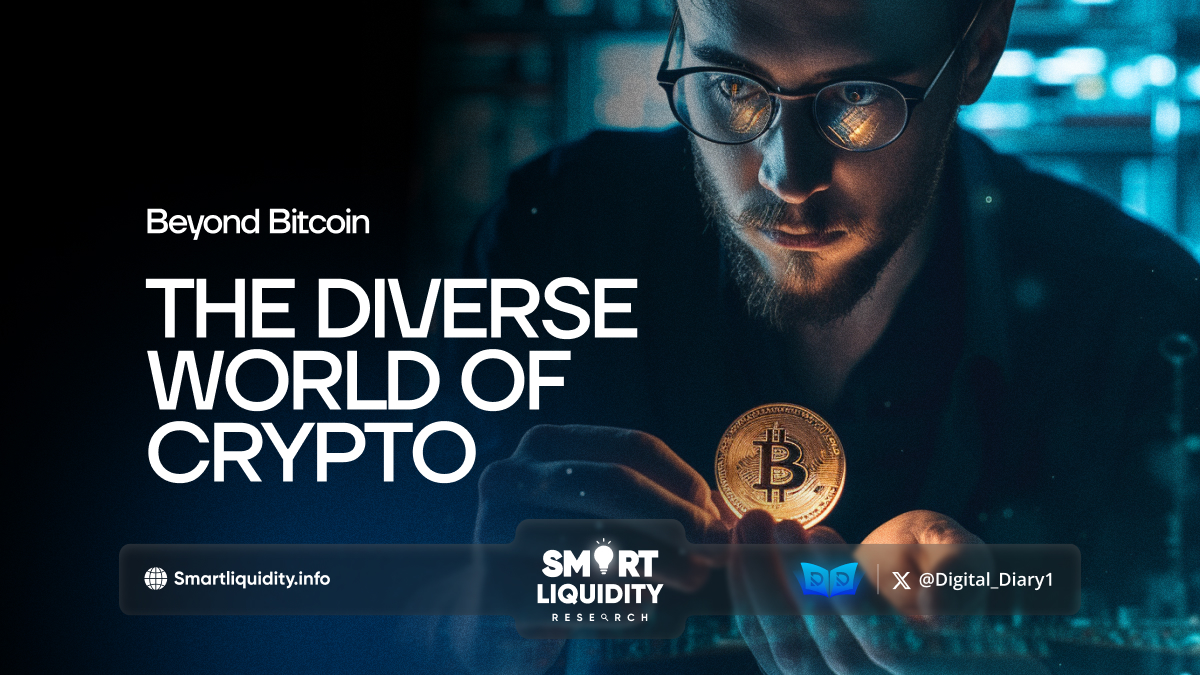Beyond Bitcoin: Exploring the Diverse World of Cryptocurrencies


In recent years, Bitcoin has dominated the spotlight as the quintessential cryptocurrency, revolutionizing the world of finance and capturing the imaginations of millions. However, the digital currency landscape is far more expansive and intricate than a single coin. As the cryptocurrency ecosystem continues to evolve, a fascinating array of altcoins (alternative cryptocurrencies) has emerged, each offering unique features and potential. In this article, we dive into the diverse world of cryptocurrencies beyond Bitcoin, exploring the innovations and opportunities that these digital assets present.
The Rise of Altcoins: A New Frontier
Bitcoin, the pioneer of digital currencies, introduced the world to the concept of decentralized money. But it wasn’t long before other visionaries saw opportunities to address Bitcoin’s limitations and build upon its foundational technology. Thus, the term “altcoin” was coined to describe the myriad of cryptocurrencies that followed. Each altcoin brings something different to the table, from enhanced privacy features to more efficient transaction mechanisms.
Ethereum: Beyond Digital Cash
Ethereum, launched by Vitalik Buterin in 2015, has become a cornerstone of the cryptocurrency universe. Unlike Bitcoin, which primarily functions as digital cash, Ethereum is a decentralized platform that enables developers to build and deploy smart contracts and decentralized applications (dApps). These innovations have led to the creation of decentralized finance (DeFi), a burgeoning sector that aims to replicate and improve traditional financial services without intermediaries.
Ripple (XRP): Revolutionizing Cross-Border Transactions
Ripple, or XRP, targets a niche that Bitcoin and Ethereum don’t directly address: the inefficiencies of cross-border transactions. Designed to facilitate instant, low-cost international payments, Ripple aims to bridge the gap between traditional banking systems and the digital currency world. By partnering with financial institutions, Ripple is transforming how money moves across borders, making transactions faster and more cost-effective.
Litecoin: The Silver to Bitcoin’s Gold
Often referred to as “digital silver,” Litecoin was created by Charlie Lee in 2011 as a lighter, faster alternative to Bitcoin. With a shorter block generation time and a different hashing algorithm, Litecoin offers quicker transaction confirmations and lower fees. Its similarities to Bitcoin make it an attractive option for those seeking a more scalable cryptocurrency, while its distinct features allow it to stand on its own.
Chainlink: Connecting Smart Contracts to Real-World Data
Chainlink addresses a crucial challenge in the blockchain space: connecting smart contracts with real-world data. Smart contracts operate on predefined rules, but they need reliable external data to function effectively. Chainlink provides a decentralized oracle network that supplies this data, enabling smart contracts to interact with real-world events and information. This innovation opens up a wealth of possibilities for automating and securing complex agreements and transactions.
Monero: Privacy at Its Core
For those who prioritize privacy, Monero stands out as a leading option. Unlike many cryptocurrencies that focus on transparency, Monero emphasizes privacy and anonymity. Using advanced cryptographic techniques, Monero ensures that transaction details and participant identities remain confidential. As privacy concerns grow in the digital age, Monero’s commitment to user anonymity makes it a compelling choice for privacy-conscious individuals.
Polkadot: Bridging Blockchain Networks
Polkadot, founded by Dr. Gavin Wood, aims to solve one of blockchain technology’s biggest challenges: interoperability. By creating a multi-chain framework, Polkadot allows different blockchains to communicate and share information seamlessly. This interoperability is crucial for the growth of the decentralized web, as it enables various blockchain networks to work together, enhancing scalability and functionality.
Conclusion: A World of Possibilities
The cryptocurrency landscape is a dynamic and ever-expanding field, brimming with innovation and potential. While Bitcoin remains a trailblazer in the digital currency space, the diverse range of altcoins and their unique features offer a glimpse into the future of finance, technology, and beyond. Whether you’re interested in smart contracts, privacy, cross-border transactions, or blockchain interoperability, there’s a cryptocurrency tailored to your needs. As the world continues to embrace digital transformation, exploring these diverse cryptocurrencies reveals the boundless possibilities that lie beyond Bitcoin.




